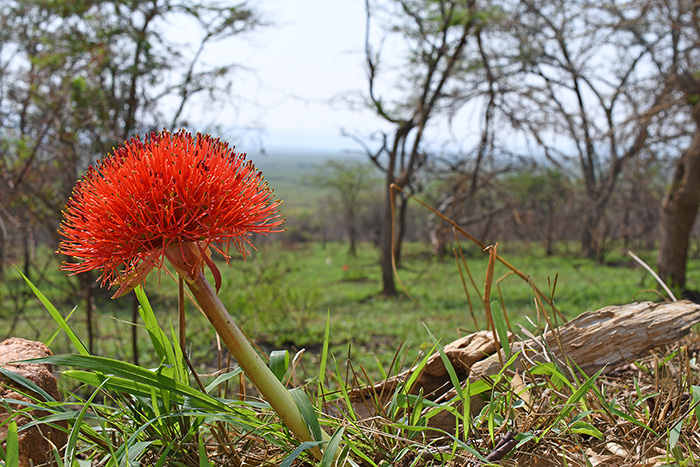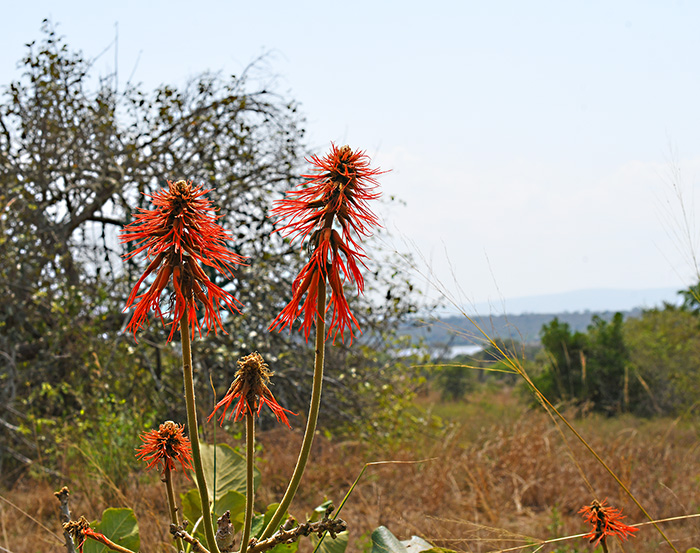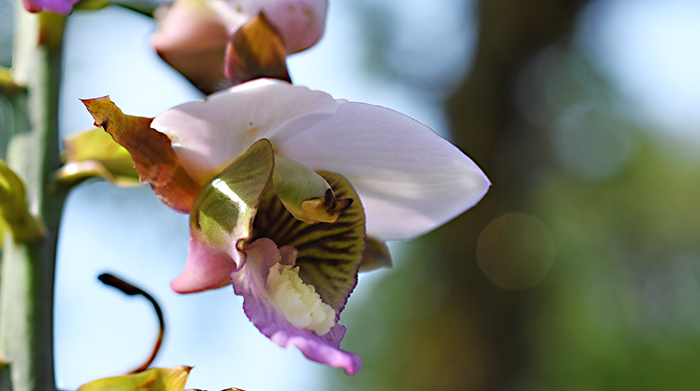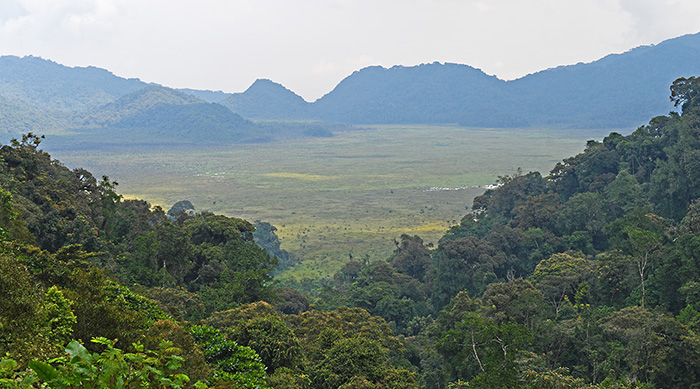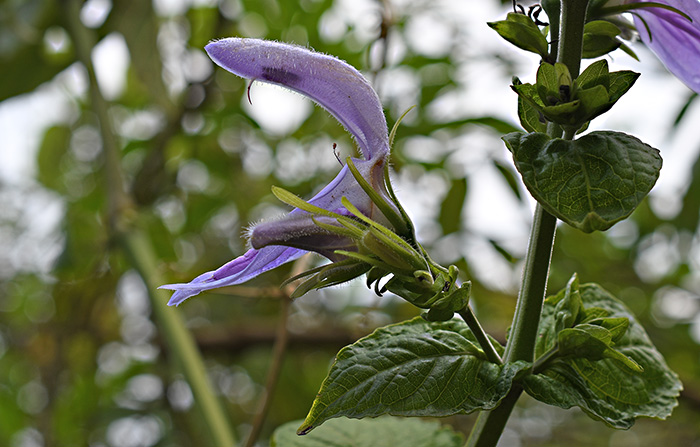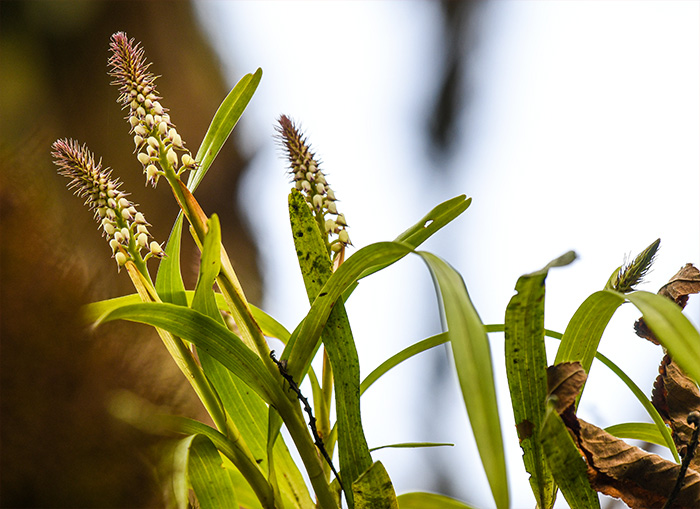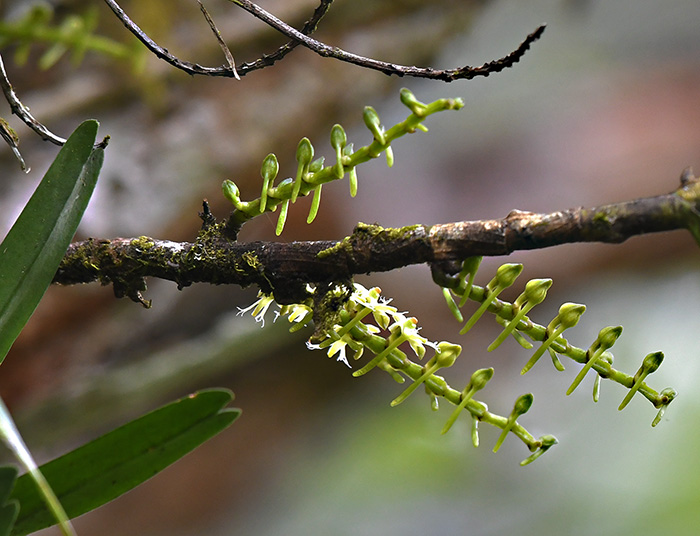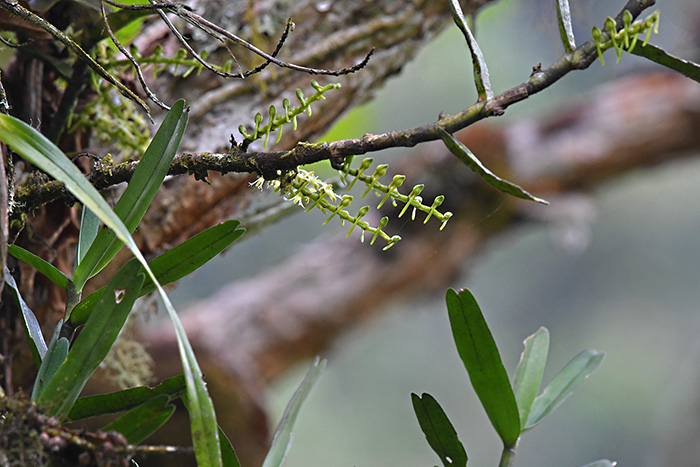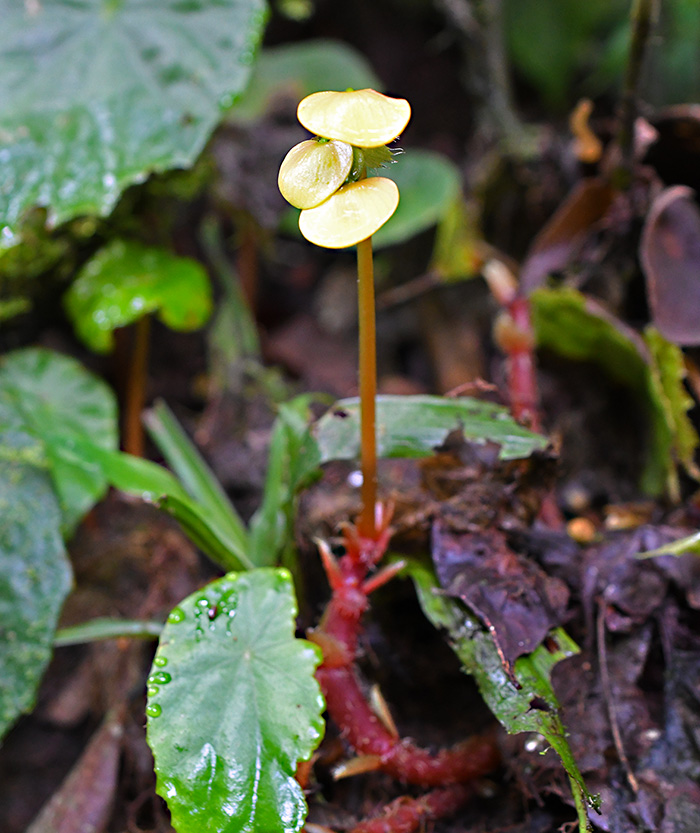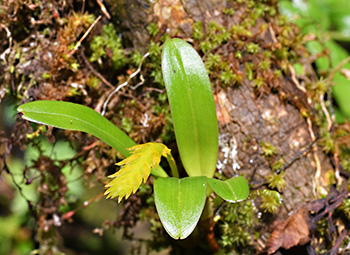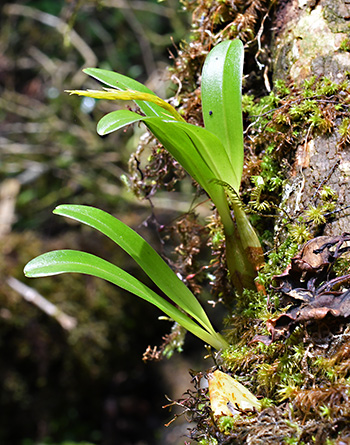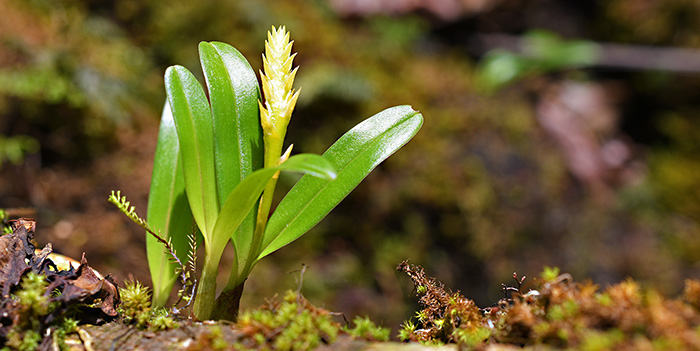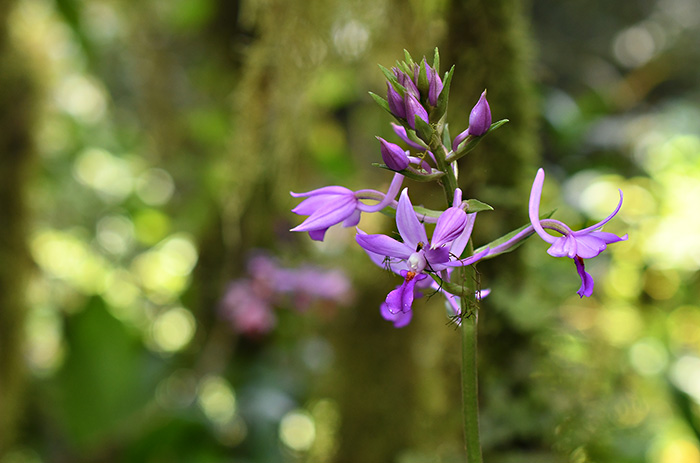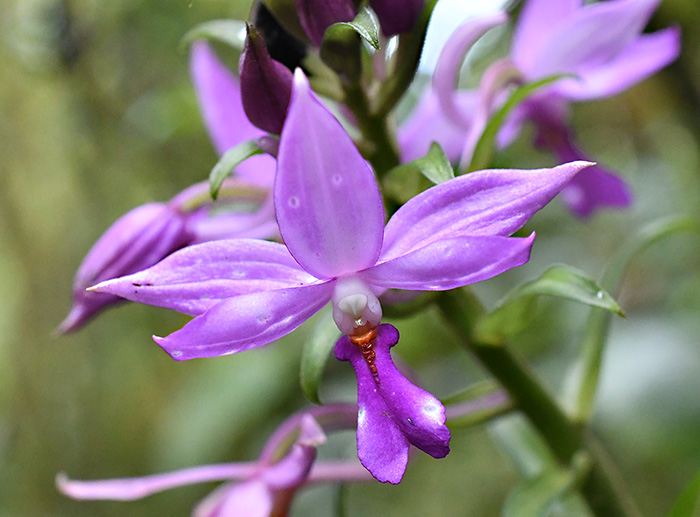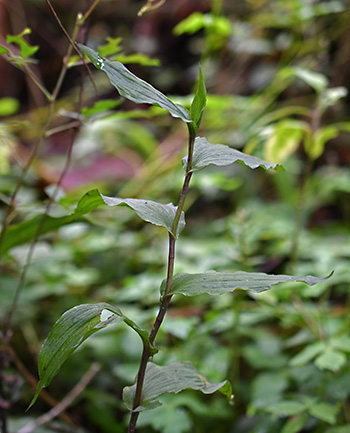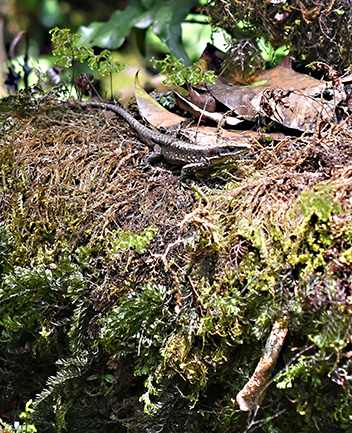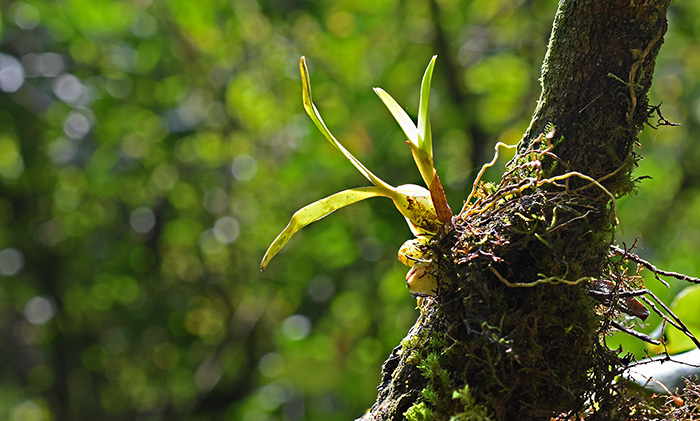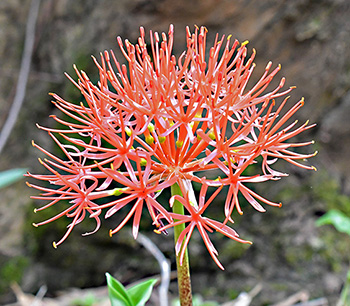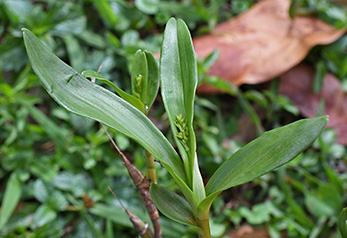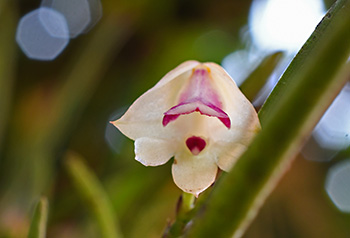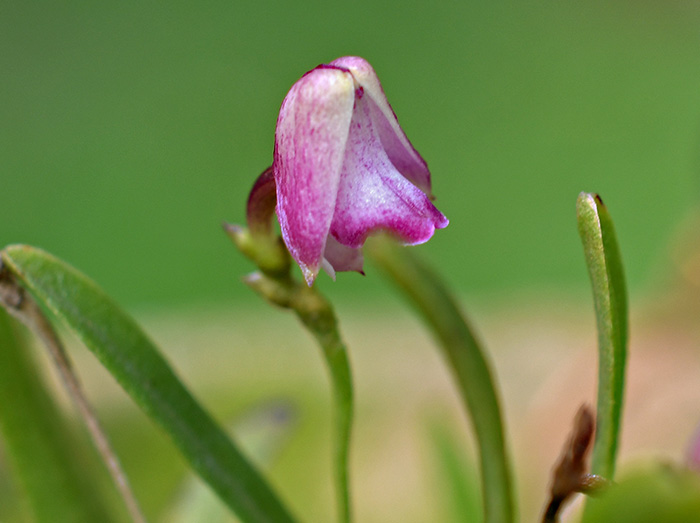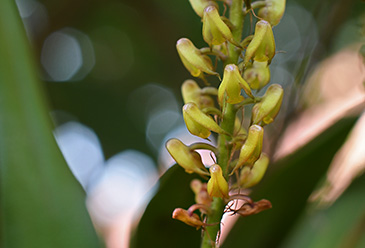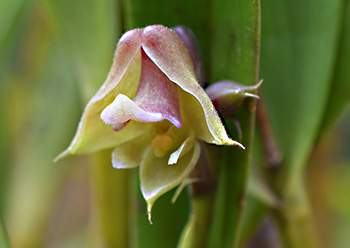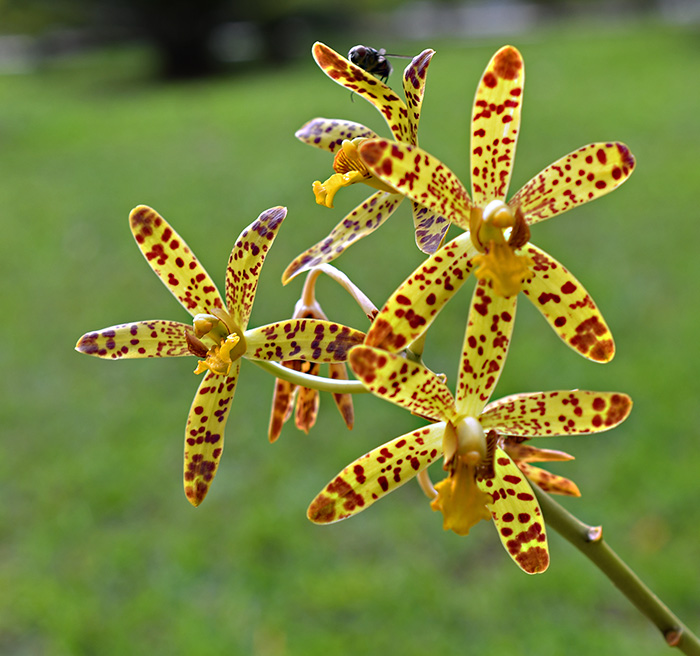(German text)
Flowering Savannah
A family visit brings me to Rwanda in September 2019 - and opens my eyes for the unbelievably manifold flora of tropical Africa. In the capital Kigali there are beautiful flowers on the roadside and in many small parks.
On September 19th and 20th we visit Akagera National Park in the east of Rwanda with its great fauna. But among zebras, impala antelopes, giraffes, hippos and elephants there are also many special plants flowering such as the above fireball lily (Scadoxus multiflorus), which belongs to the family of Amaryllidaceae. The rain season just has begun, so the savannah is still very dry. But the olive baboon family should soon find more fruits. And for male impala antelopes it's now the time to challenge their rivals.
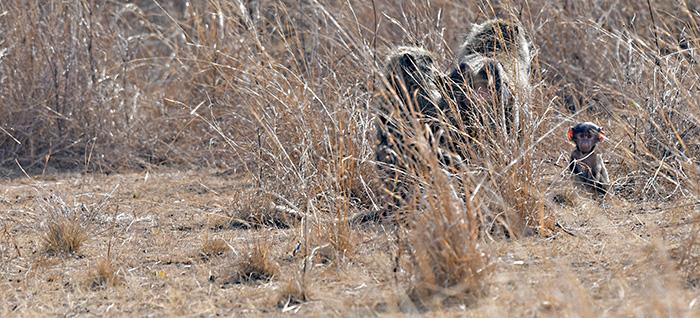

The Aloe plants are well adapted to drought. Their elongate flowers are pollinated by birds. The flower of Hibiscus aponeurus has just opened.
The shrubs and trees of Erythrina abyssinica are typical of Eastern Africa. The common name coral bean refers to its family, the Fabaceae. A great help to determinate African plants is the photo database of the Senckenberg research institute.
Very impressive are the birds of Akagera. An African fish eagle is flying over a lake with crocodiles and hippos. In the trees, we see a Bare-Faced Go-away-bird (Corythaixoides personatus) and a colorful Lilac-breasted roller (Coracias caudatus).
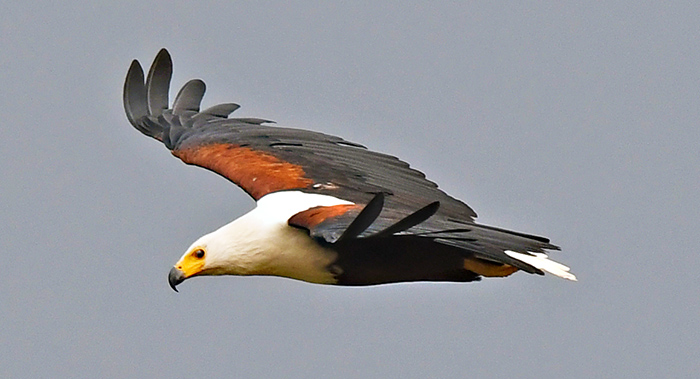
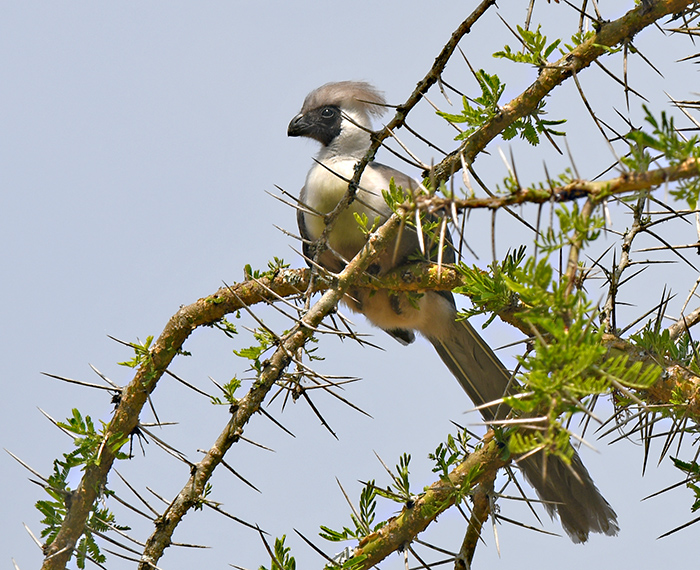
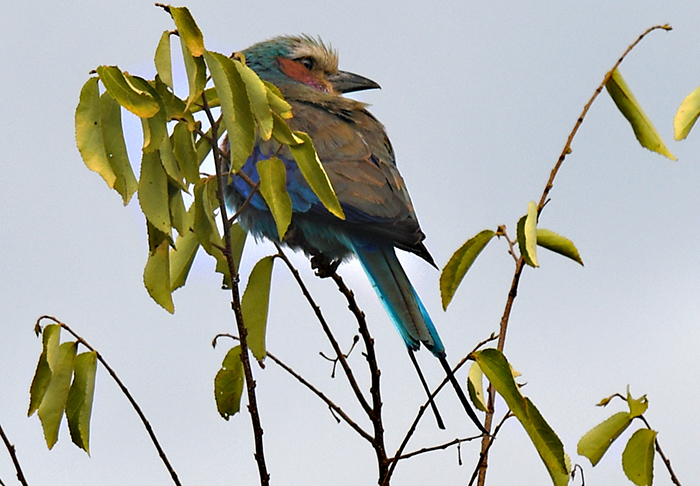
To Nyungwe forest
On September 24th we drive to the southeast of Rwanda, in the direction of the Nyungwe National Park. On our way, we have a stop in Butare (formerly Huye) to visit the Ethnographic Museum and Café Connexion. Near the city, we pass an interesting forest. There, I see my first orchid in Rwanda - but it's not an African orchid. The plant was brought from Central America, Epidendrum radicans (or Epidendrum x obrienianum, a hybrid of Epidendrum radicans). Later, I see this plant again in the garden of a restaurant in Kibuye, on the shore of Lake Kivu. This showy orchid came to Africa as an ornamental plant. Obviously, it likes the climate in Rwanda, so it spread outside of gardens. With over 1500 species, Epidendrum is the second largest orchid genus of the world after Bulbophyllum with about 2000 species.
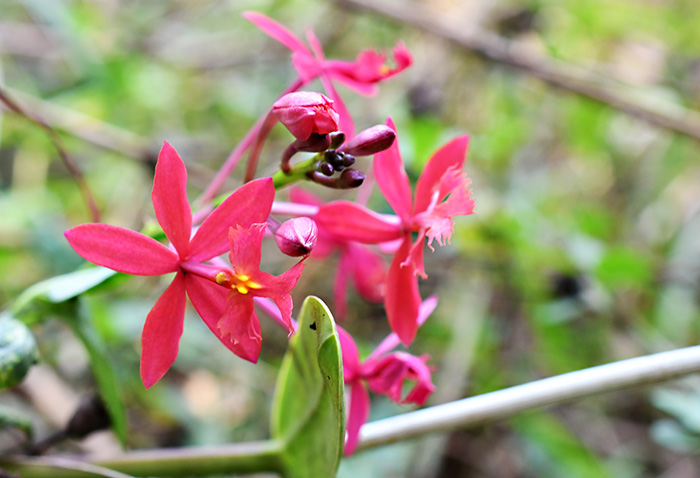 Most Epidendrum species are epiphytic. Though Epidendrum radicans is developing long bright roots out of its stem, it is growing on earth and covers wide areas. Neophytic plants are not only a big issue in Europa. In Africa are many plants widespread which originate from other continents. Some of them have an invasive character - they diffuse broadly and sometimes they might displace native species. Among those is the Lantana (Lantana camara), originally from Central America. This shrub with its multi-colored flowers can also be seen in the Akagera park.
Most Epidendrum species are epiphytic. Though Epidendrum radicans is developing long bright roots out of its stem, it is growing on earth and covers wide areas. Neophytic plants are not only a big issue in Europa. In Africa are many plants widespread which originate from other continents. Some of them have an invasive character - they diffuse broadly and sometimes they might displace native species. Among those is the Lantana (Lantana camara), originally from Central America. This shrub with its multi-colored flowers can also be seen in the Akagera park.
In the evening we reach the edge of Nyungwe forest and find a tent in Kitabi Ecocenter, in an altitude of 2450 meters. After a strong thundery rain in the evening we awake at sunrise. The Nyungwe forest is dreaming in the morning fog.
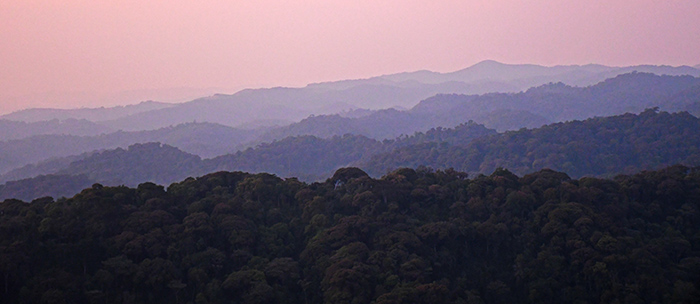
Uwinka
Passing the street through the Nyungwe forest, there is a tense atmosphere. After attacks of rebels from Burundi there are soldiers at the roadside. We arrive at the Uwinka welcome center where we get a pot of hot tea and wait for our guide. A special authorization for research is needed to visit Nyungwe National Park without a guide. Nyungwe is the biggest tropical mountain forest in Eastern and Central Africa. There are rainfalls of about 2000 mm per year - three times as much as in the German city of Frankfurt with about 660 mm. In Nyungwe there are springs of rivers which finally reach either the Congo or the Nile. In 1838, the researcher Richard Kandt (1867-1918), whose home in Kigali we visited, found the source of the White Nile. He wrote a book about his journey, Caput Nili, published in 1904. In Nyungwe there are about 3000 species of plants - that's the estimate of Eberhard Fischer and Dorothee Killmann in their guide Plants of Nyungwe National Park (2008). Among those there are 47 endemic species of Nyungwe.
Since it takes some time to arrange our tour, I explore the environment. At a slope there is a big beautiful orchid with flowers at eye level. That's Eulophia horsfallii, a terrestrial orchid which can reach a height of three meters. It's the biggest orchid in Rwanda and flowers almost around the year. In Kinyarwanda language the plant is called Ikimashi. It has its home in tropical Africa and may also be found in South Africa.
The name of the genus Eulophia - with about 200 species in America, Africa and Asia - comes from the Greek words eu (beautiful) und lophia (ridge). It refers to the ridge in the middle lobe of the labellum. The name of the species is recalling the memory of the British botanist J.B. Horsfall. The scientific description published in 1865 was based on a plant cultivated by Horsfall. Above the lip there are two big petals of a bright violet color. The sepals are brownish to orange, and the flowers have a nice red-violet spur.
Kamiranzovu Trail
Finally the trip can begin. Our guide Claude is heading to the starting point of the Kamiranzovu Trail. The Kamiranzovu swamp is a wide open area surrounded by the tropical forest. It is the largest peat bog in tropical Africa. In this area the last elephants of Nyungwe lived until 1999. The name Kamiranzovu is interpreted as a combined word of the verb kamira (to swallow) and nzovu (elephant) - even elephants have been immersed into the swamp.
The rain forest is fascinating. We are surrounded by plants we never saw before. Trees are growing in different levels. The tree Anthocleista grandiflora forms wide crowns of big leafs which are traditionally used to make a tea against Malaria. Therefore it is commonly called the forest fever tree. Below we see the flowering Dichaetanthera corymbosa, a tree which can grow to a height of 15 meters.
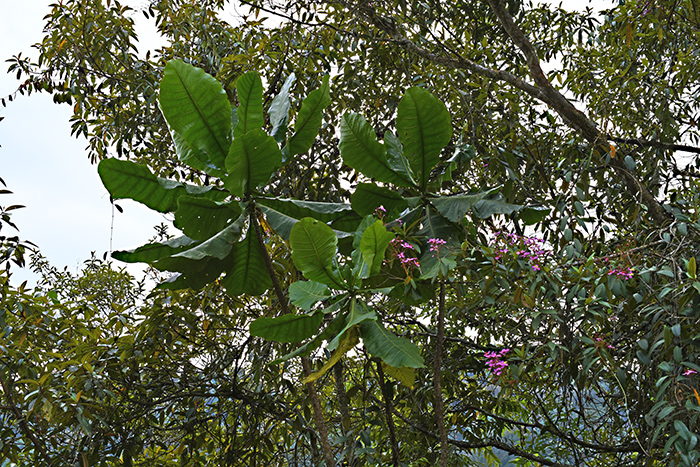
The herb Brillantaisia nitens (Kinyarwanda: Icyunga) belongs to the family of Acanthaceae. Its leafs are traditionally used as a painkiller.
In the lower zone of the rain forest vegation Impatiens stuhlmannii is flowering, one of eleven Impatiens species registered by Eberhard Fischer and Dorothee Killmann in the Nyungwe forest.
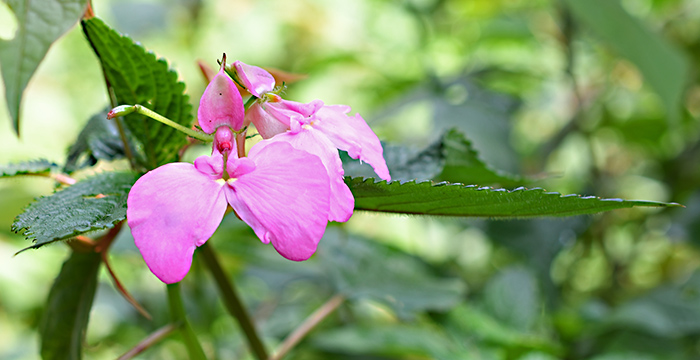
The narrow path is leading us downwards until we reach the level of the Kamiranzovu swamp. On a tree I see the first epiphytic orchid: Polystachya adansoniae. It is growing on a branch with mosses and ferns. Viewing it from the ground, we can hardly see that the inflorescence is just beginning to flower. So it's good to view it with the 300 mm lens of my Nikon D500. Polystachya is a genus with about 230 species, mostly in Africa but some also in Asia and America. A characteristic pattern of the Polystachya flower is that they are not resupinated - the lip is directed downwards. And the lateral sepals form a kind of a little hat covering the lip.
On the same branch there is another orchid species, Tridactyle bicaudata. The small buds with a relatively long spur are all arranged in the same order. At the lower end of the inflorescence the first white flowers have opened. They have a clearly three-lobed lip, the side lobes are a bit longer than the middle and they are fringed.
The genus Tridactyle comprises about 50 species, all in tropical Africa. The name refers to the clear tripartition of the lip with three "fingers". Tridactyle bicaudata is an epiphitic orchid which needs rainfalls of more than 1200 mm per year. The plant has woody and thickened stems. It is said that the up to 25 flowers of the inflorescence have a pleasant sweet fragrance. On the ground this is not sensible, but the air in the rain forest is nevertheless filled with rich humidity and the sounds of insects and birds.
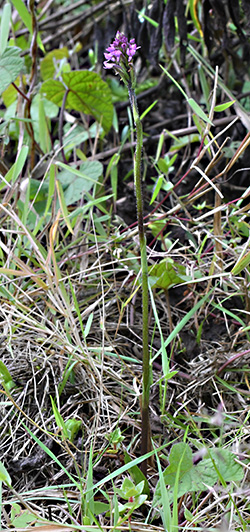 A few steps further - still at the edge of the open Kamiranzovu swamp - Claude shows us a small terrestrial orchid with a long stem: Cynorkis anacamptoides. Slender leafs are nestled to the stem. Its end forms a dense inflorescence with small violet flowers. They are quite compact, the middle sepal forming a hood together with the petals. The lateral sepals are spreaded, the lip is short, undivided and cylindrical. The small greenish spur which is bent downwards, is especially beautiful (click on the picture to see it). The genus Cynorkis comprises about 170 orchids with 120 alone in Madagascar.
A few steps further - still at the edge of the open Kamiranzovu swamp - Claude shows us a small terrestrial orchid with a long stem: Cynorkis anacamptoides. Slender leafs are nestled to the stem. Its end forms a dense inflorescence with small violet flowers. They are quite compact, the middle sepal forming a hood together with the petals. The lateral sepals are spreaded, the lip is short, undivided and cylindrical. The small greenish spur which is bent downwards, is especially beautiful (click on the picture to see it). The genus Cynorkis comprises about 170 orchids with 120 alone in Madagascar.
In Nyungwe forest there are four Cynorkis species. To demonstrate Claude my special interest, I show him the book of Eberhard Fischer, Dorothee Killmann, Gilbert Delepierre and Jean-Paul Lebel about The Orchids of Rwanda which was published in 2010. The tight-lipped Claude is so avid about it that he doesn't want to give the book back, time and again scrolling through its pages. Sure - a Nyungwe guide has to go ahead with an orchid guide.
Just in the very neighborhood of the Cynorkis orchid we see the next special plant, Satyrium crassicaule. 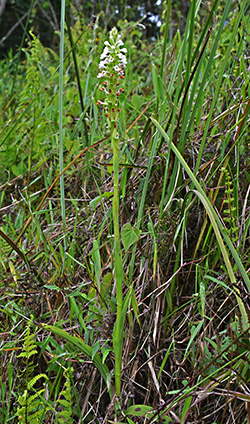 For the first time I see an orchid with two spurs! This feature is characteristic for the genus Satyrium which comprises 92 species. Most of them are growing on the African continent - five species have been found on Madagascar and four in Asia. Both spurs contain nectar to attract pollinator. The moth Macroglossum trochilus which belongs to the familiy of Sphingidae has been detected as pollinator of Satyrium crassicaule.
For the first time I see an orchid with two spurs! This feature is characteristic for the genus Satyrium which comprises 92 species. Most of them are growing on the African continent - five species have been found on Madagascar and four in Asia. Both spurs contain nectar to attract pollinator. The moth Macroglossum trochilus which belongs to the familiy of Sphingidae has been detected as pollinator of Satyrium crassicaule.
At the edge of the wide swamp area we see again Eulophia horsfallii. Some of the strong stems carry an inflorescence still with buds.
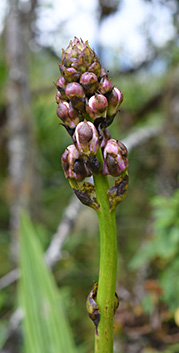
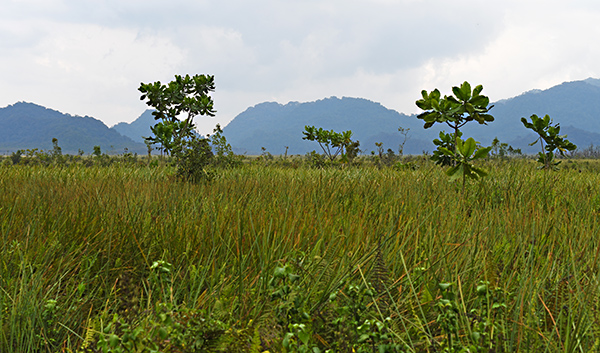
We pass a source with water sputtering out of a round hole in the ground. Then we enter an area of dense rain forest. On the ground we see the big round fruits of the tree Carapia grandiflora which enclose several seeds like chestnuts. Those are a nutrition of chimpanzees in Nyungwe forest, in former times also of elephants.
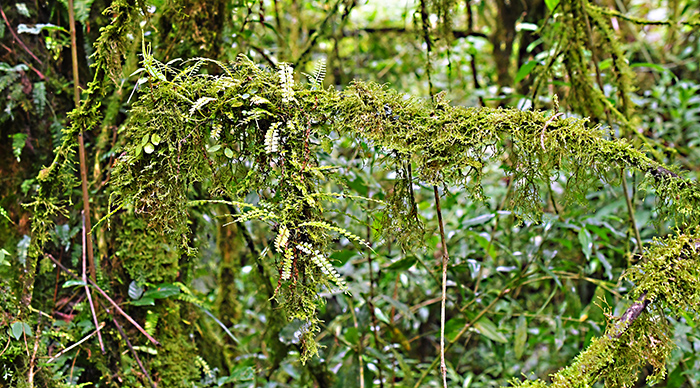
Everywhere we detect new plants - phantastic ferns, huge structures of lichen and an endemic species which is only known from the the western Nyungwe rain forest: Begonia pulcherrima, the "very beautiful begonia".
The trail is leading us to an overturned tree with many small epiphytes growing on its branches. Some of these orchids just have developed an inflorescence with rows of minute buds.
This is Bulbophyllum oreonastes, an orchid of tropical Africa. Bulbophyllum is the largest genus of orchids with more than 2000 species. Out of a pseudobulb two leafs and the inflorescence are sprouting. Pseudobulbs are thickened parts of the stem and serve as a storage of water and nutrients. Even very young plants develop an inflorescence.
In a wet sink of the rain forest many white-violet terrestrial orchids are flowering: Calanthe sylvatica. The genus Calanthe received its name from the Greek words kallos and anthos which means beautiful flower. The genus comprises about 220 species in all tropical regions, most of them in Southeast Asia.
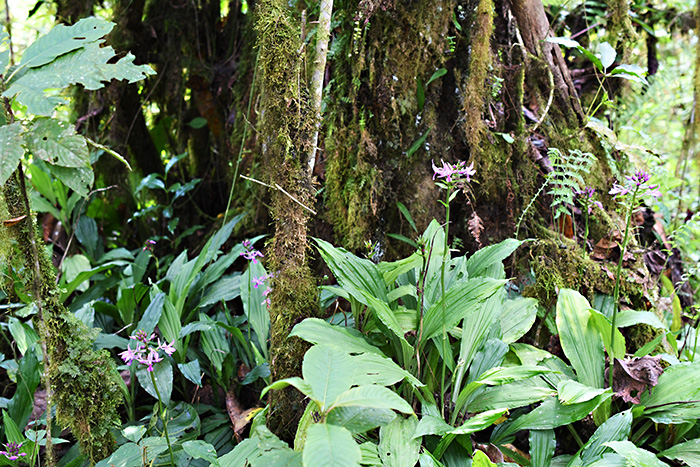
Calanthe sylvatica can grow up to 65 centimeters. It has small pseudobulbs and big broad leafs reminding a bit of the leafs of the European orchid Cypripedium calceolus. The long inflorescence carries at its end about 10 to 25 single flowers with a spur bent downwards.
The lip has three parts with very small side lobes and a sinuate middle lobe. At the ground of the lip there is an orange callus. Calanthe sylvatica is widespread in tropical Africa, even on Madagascar.
In the same area of the forest there is also Epipactis africana growing, the only species of this mainly European genus in Rwanda. It is starting its flowering season only in March.
On the last parts of the loop trail we see more Bulbophyllum species and enjoy the diversity of ferns. Finally we reach the street again and we say goodbye to Claude.
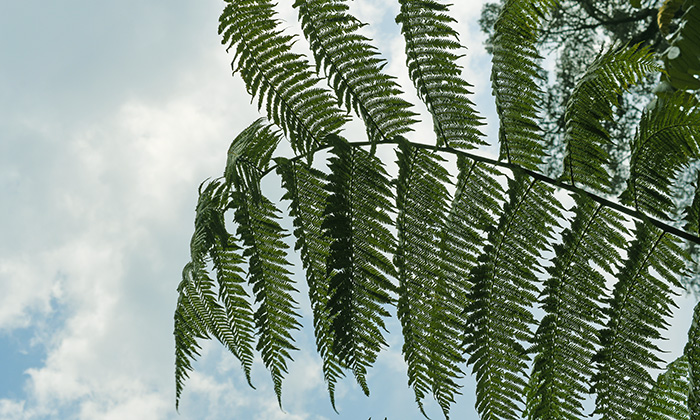
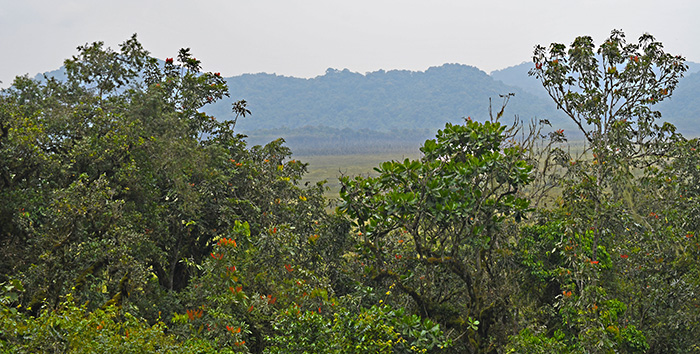
Our last encounter in Nyungwe rain forest is with a group of beautiful mountain monkeys, Cercopithecus lhoesti.
At Lake Kivu
After this remarkable field trip we leave the National Park. We stay in the Family Hostel in the village of Gisakura where a strong thunderstorm is disrupting power. Even water is only trickling from the tap. We calmly accept it: That's all part of the jungle experience. The next morning I awake early and start for a walk into the village forest. Soon I have a companion: A 14-year-old boy is showing me the plants he knows. Among those is the grass which is used fpr the traditional brewing of banana beer.
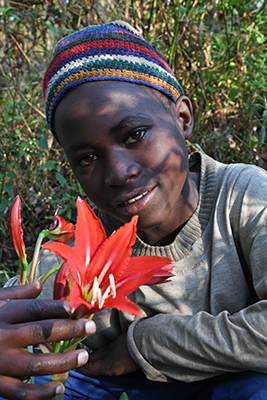
There is an eye-catching neophyte from South America with big read flowers and long bright anthers. The botanist Stefan Dressler at Senckenberg institute in Frankfurt/Germany later determined it as Hippeastrum puniceum, native in South America. My local guide is explaining me which plants are good for young goats and which are poisonous - local wisdom.
Then we start to the North, following the shores of Lake Kivu. Our destination for the day is Kibuye where we arrive on midday. We take a boat to travel to two islands. First we arrive at Napoleon Island with a large colony of fruit bats (Eidolon helvum).

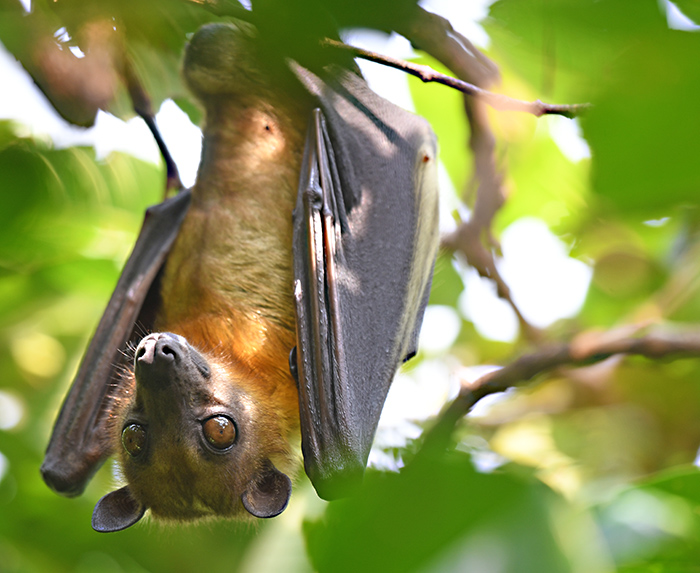
On the smaller island we are greeted by a vervet monkey (Chlorocebus pygerythrus) which is happy about our bananas. On this island I also see a fireball lily (Scadoxus multiflorus) with a less dense inflorescence that the plant we have seen in the Akagera savannah.
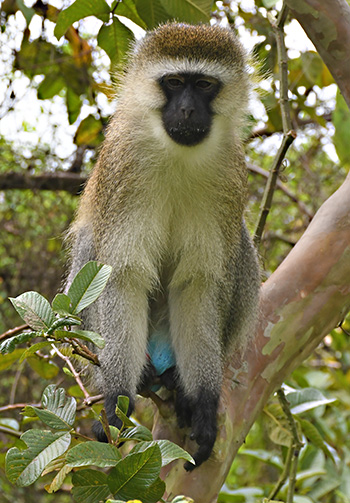
After a night in Kibuye the morning begins with bird watching. The calls of the tropical birds are breathtakingly beautiful.
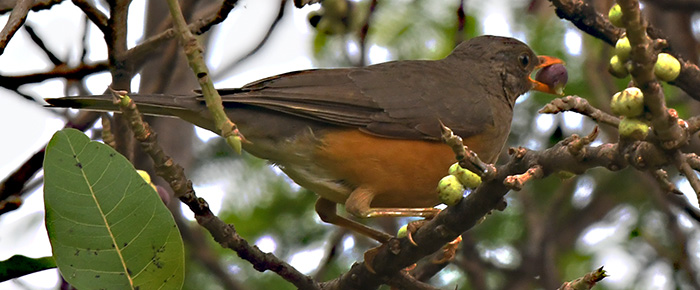
We also have fruits for breakfast before we travel further to the North. We pass the Gishwati forest - here a new National Park is planned. In Gisenyi we reach the Northern end of Lake Kivu. The neighbouring town is Goma - already in Congo. In a garden café we enjoy a break and watch birds. Among them is the Black Kite (Milvus migrans) which is also circling above the capital of Kigali. Finally we arrive in Kinigi near Ruhengeri (Musanze) where we stay in a guest house. Our friendly hostess has the beautiful name Peace.
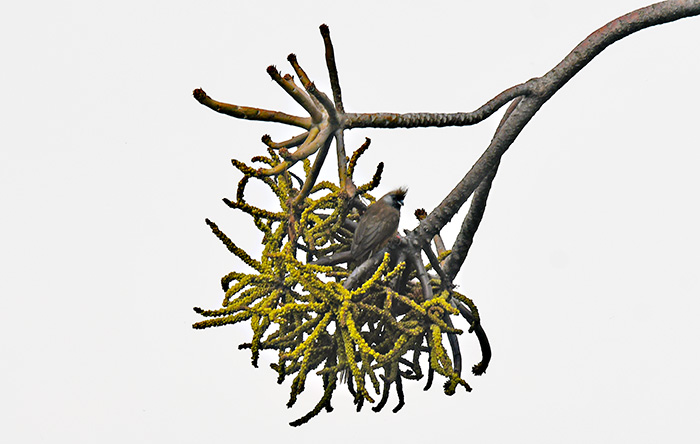
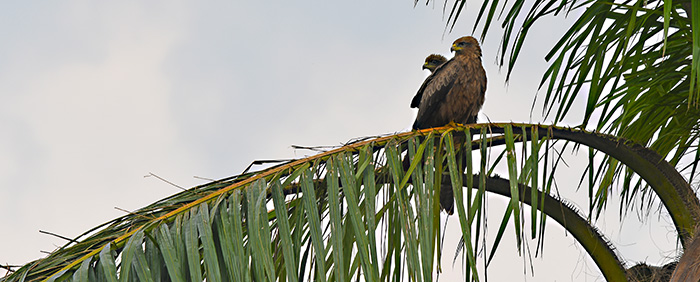
Volcanoes National Park
Early morning on September 28th we go the welcome center of the Volcanoes National Park. The vast rain forest of the border triangle between Rwanda, Congo and Uganda also has an interesting flora. But the main interest belongs to the mountain gorillas. We don't have enough money for meeting these special primates. So we take a visit to the Golden Monkeys (Cercopithecus kandti) in order to get an impression of the National Park. We pass a village and its fields. Children come to us and show us a chameleon (Trioceros rudis).
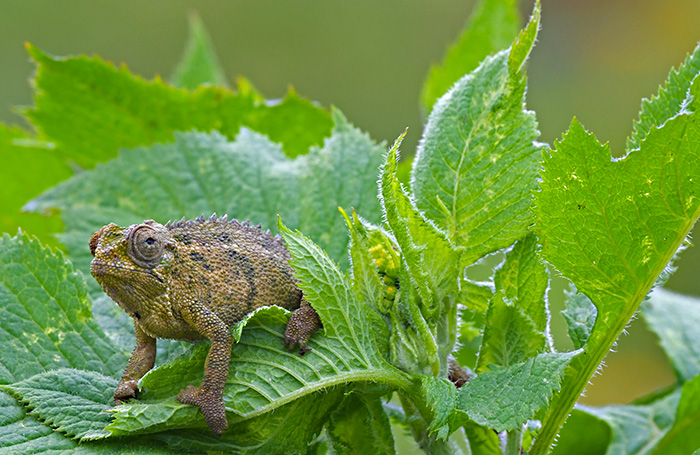
Above the fields a large bamboo forest begins. Our guide Francois leads us to a big group of monkeys. They jump around us. Suddenly we are surrounded in a magic environment, face to face with the monkeys. They keep their distance to us but are quite conscious about our presence.
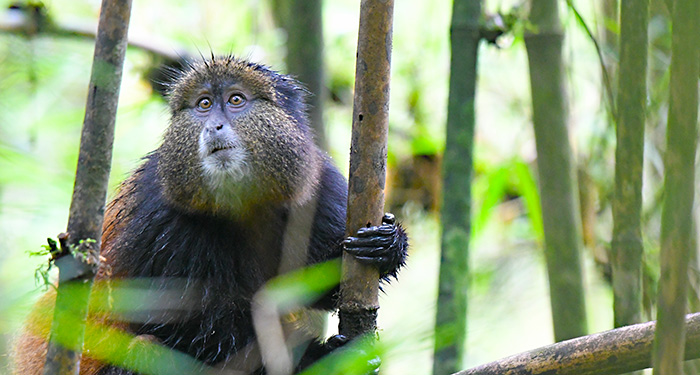
The bamboo forest is fascinationg. But the brushwood is lacking the diversity of flowering plants we have seen in Nyungwe. Returning to the village I can continue my Hibiscus studies.
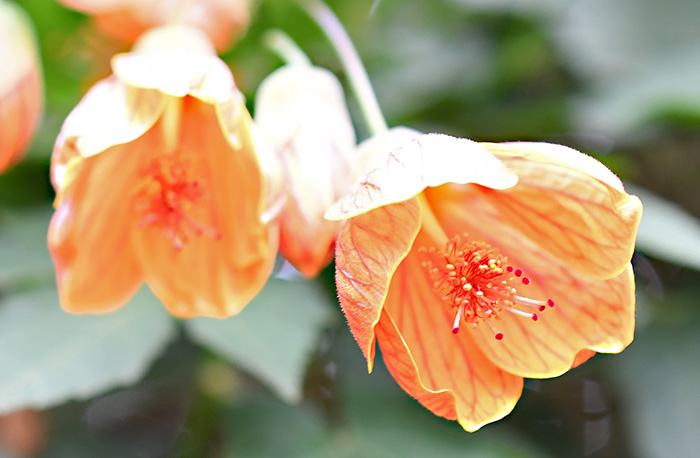
In the evening we arive at Byiza Lodge between the lakes Ruhondo and Burera which are called the Twin Lakes. The last stretch to the hill is an adventure due to the rough road. But finally we enjoy a beatiful view to both lakes and the five volcanoes (from left to right): Karisimbi (4507 m), Bisoke (3711 m), Sabyinyo (3669 m), Gahinga (3474 m) and Muhabura (4127 m). This view gives us a great joy on a magic Sunday morning before we drive back to Kigali on September 29th.

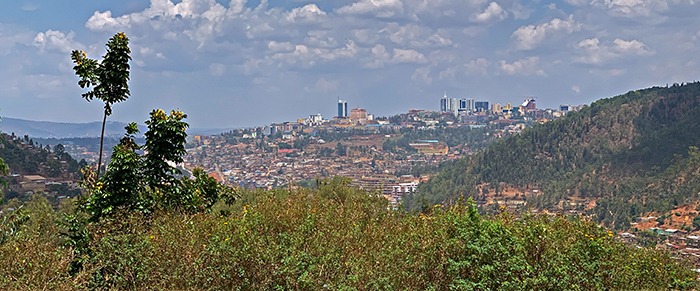
visiting the orchid grove
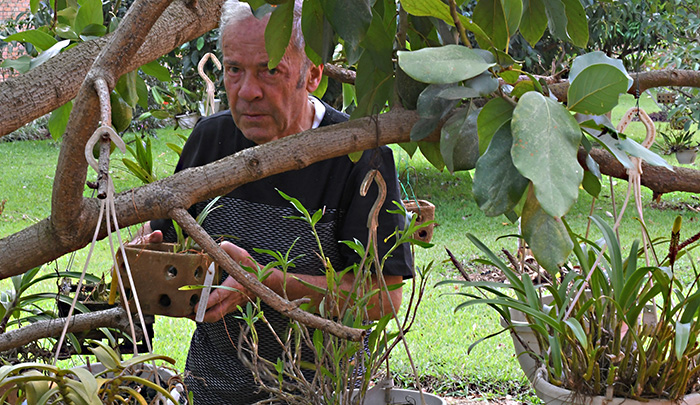
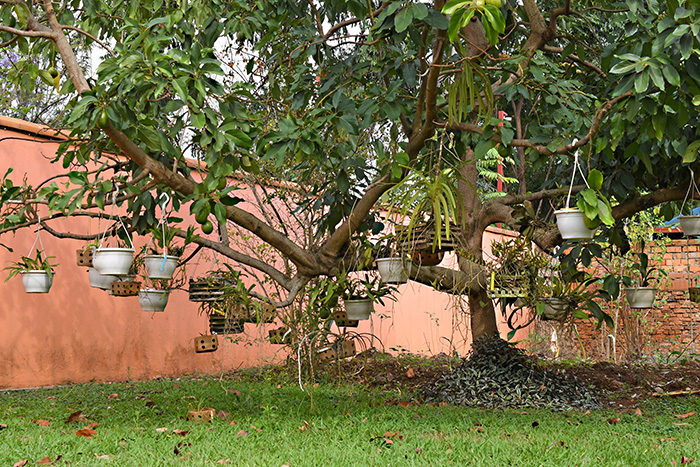
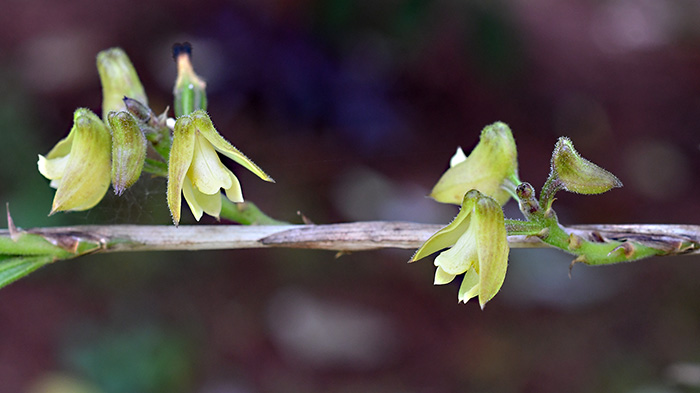 Finally Jean-Paul shows me an especially showy orchid of Rwanda: Ansellia africana is flowering both in Nyungwe forest and in Akagera National Park - thus closing the circle of this special journey to Rwanda.
Finally Jean-Paul shows me an especially showy orchid of Rwanda: Ansellia africana is flowering both in Nyungwe forest and in Akagera National Park - thus closing the circle of this special journey to Rwanda. List of species
- Ansellia africana
- Bulbophyllum oreonastes
- Calanthe sylvatica
- Cynorkis anacamptoides
- Epipactis africana
- Eulophia horsfallii
- Polystachya aconitiflora
- Polystachya adansoniae
- Polystachya bennettiana
- Polystachya eurygnatha
- Polystachya galeata
- Polystachya vulcanica
- Polystachya woosnamii var. nyungwensis
- Satyrium crassicaule
- Tridactyle bicaudata
